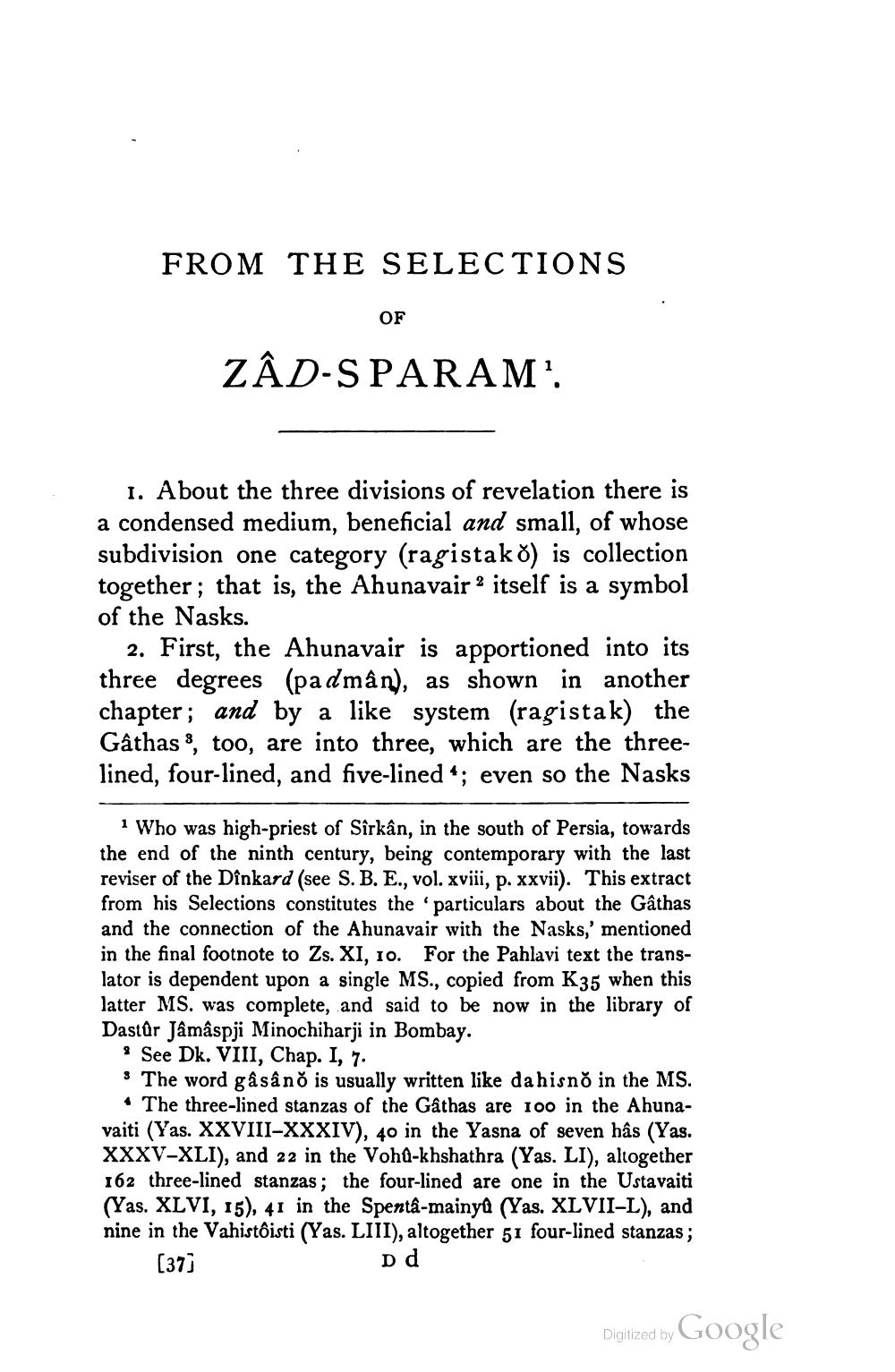________________
FROM THE SELECTIONS
OF
ZÂD-SPARAM1.
1. About the three divisions of revelation there is a condensed medium, beneficial and small, of whose subdivision one category (ragistak ŏ) is collection together; that is, the Ahunavair 2 itself is a symbol of the Nasks.
2. First, the Ahunavair is apportioned into its three degrees (padmân), as shown in another chapter; and by a like system (ragistak) the Gâthas, too, are into three, which are the threelined, four-lined, and five-lined; even so the Nasks
1 Who was high-priest of Sîrkân, in the south of Persia, towards the end of the ninth century, being contemporary with the last reviser of the Dînkard (see S. B. E., vol. xviii, p. xxvii). This extract from his Selections constitutes the 'particulars about the Gâthas and the connection of the Ahunavair with the Nasks,' mentioned in the final footnote to Zs. XI, 10. For the Pahlavi text the translator is dependent upon a single MS., copied from K35 when this latter MS. was complete, and said to be now in the library of Dastur Jâmâspji Minochiharji in Bombay.
2 See Dk. VIII, Chap. I, 7.
3 The word gâsânŏ is usually written like dahisno in the MS. The three-lined stanzas of the Gâthas are 100 in the Ahunavaiti (Yas. XXVIII-XXXIV), 40 in the Yasna of seven hâs (Yas. XXXV-XLI), and 22 in the Vohû-khshathra (Yas. LI), altogether 162 three-lined stanzas; the four-lined are one in the Ustavaiti (Yas. XLVI, 15), 41 in the Spentâ-mainyû (Yas. XLVII-L), and nine in the Vahistôisti (Yas. LIII), altogether 51 four-lined stanzas ; D d
[37]
Digitized by
Google




